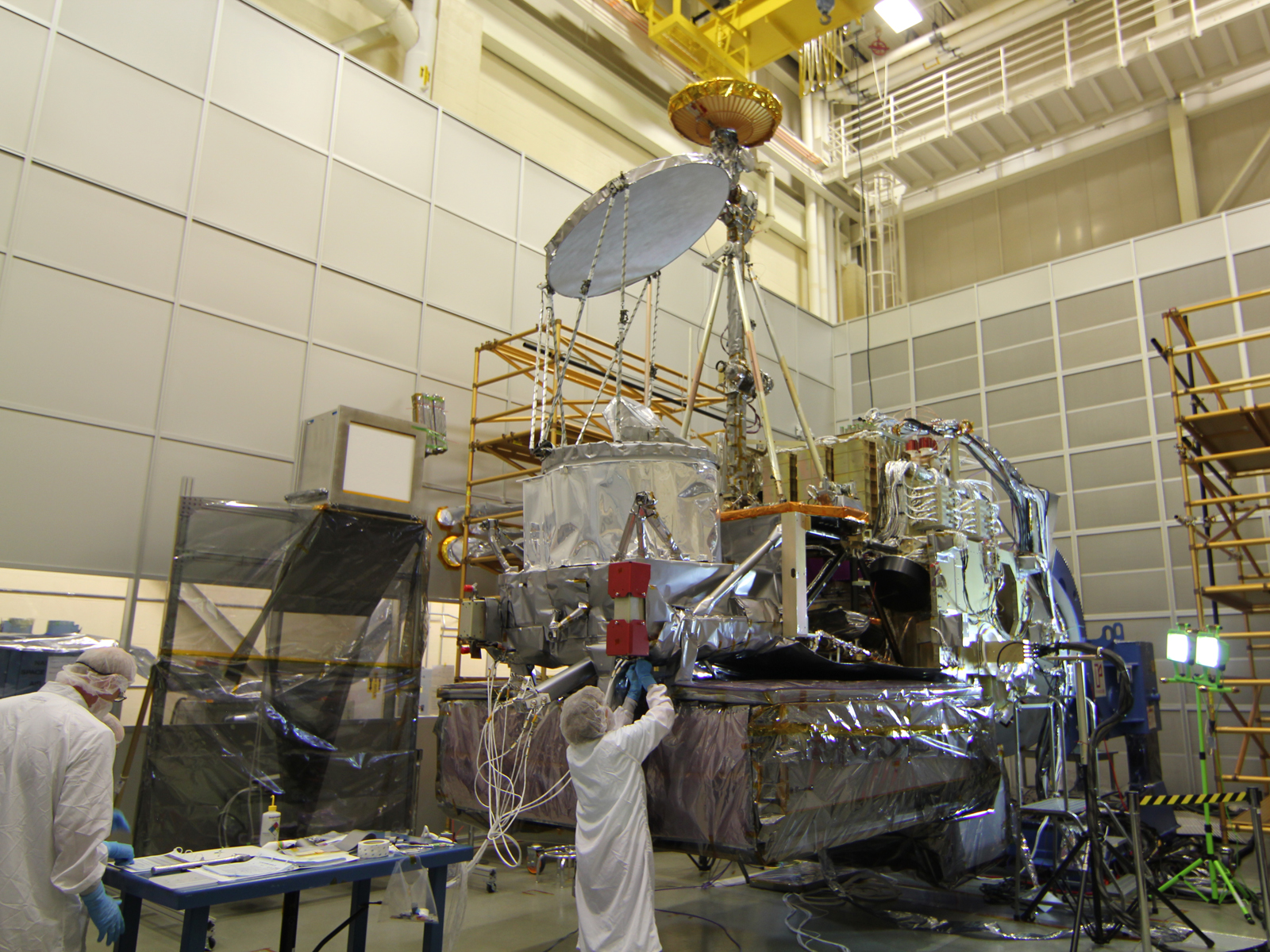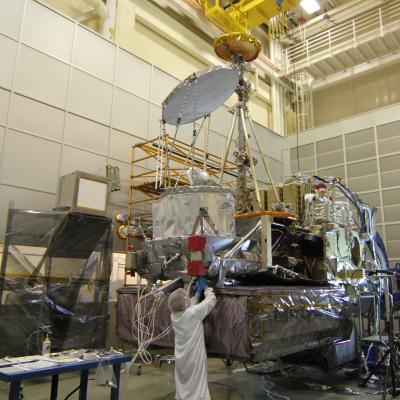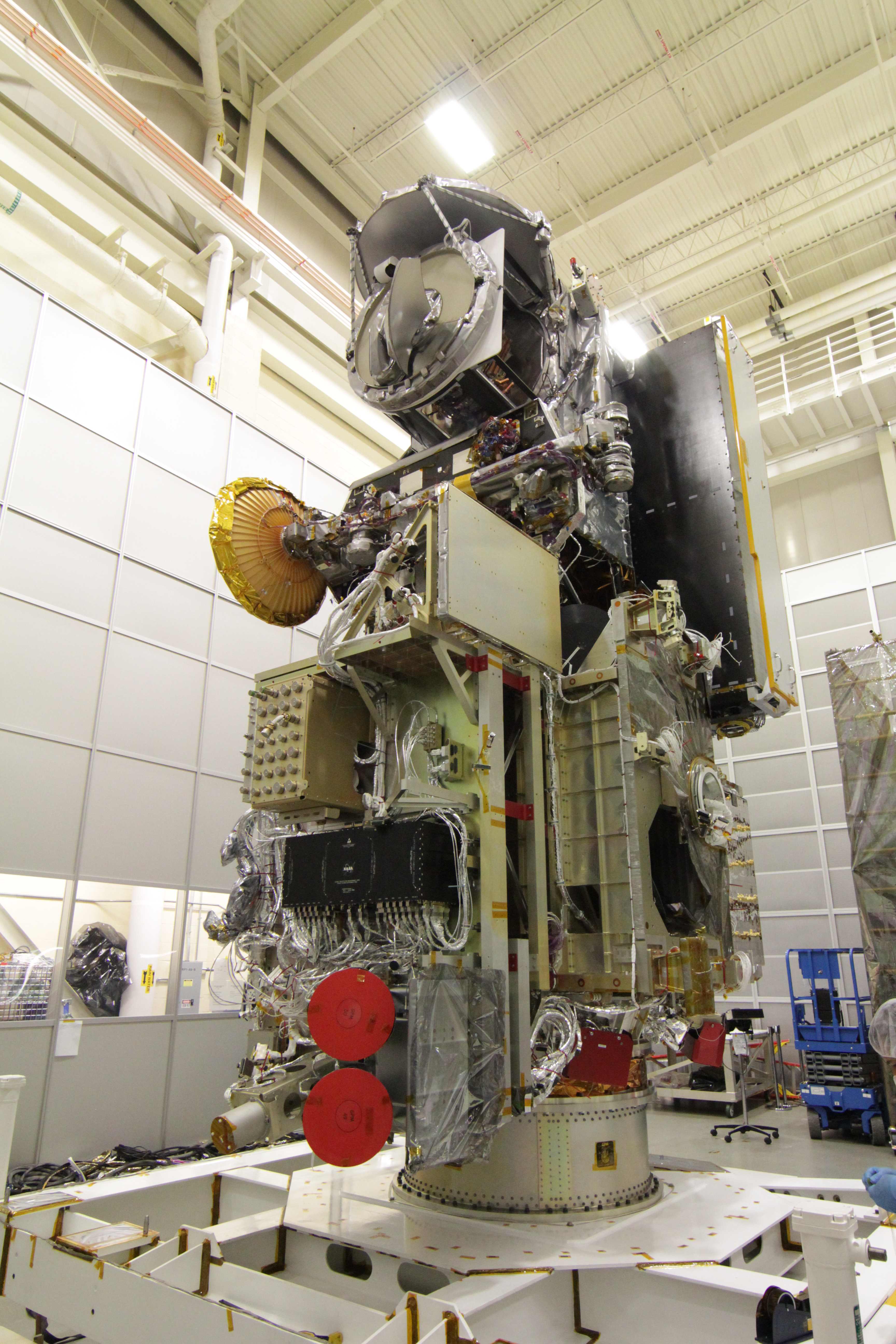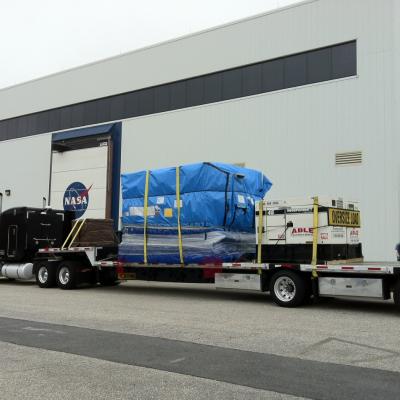GPM Completes First Dry Run

Image Caption
Engineers check on the GPM spacecraft after successful completion of its first comprehensive performance test.
The silver disc and drum (center) is the GPM Microwave Imager, and the large block on the base is the Dual-frequency Precipitation Radar. The tall golden antenna is the High Gain Antenna for communications.




